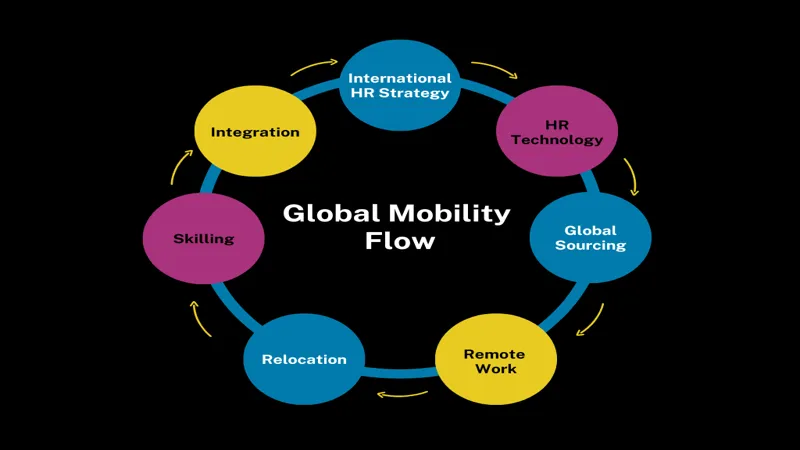In recent years, the phenomenon of digital nomadism has emerged as a transformative force in the realm of remote work, particularly across the vibrant landscapes of Asia. As more professionals embrace the freedom to work from anywhere, cities and resort towns in the region are undergoing significant changes to accommodate this dynamic lifestyle. With a burgeoning demand for short-term rentals and coworking spaces, local governments are eager to attract this mobile workforce through innovative visa programs tailored to digital nomads. From Thailand’s Destination Thailand Visa (DTV) to Indonesia’s forthcoming Remote Worker Visa, the competition is intensifying, prompting a wave of innovation that reshapes housing, infrastructure, and local economies.
| Category | Details |
|---|---|
| Digital Nomadism | A growing trend of remote work allowing individuals to travel while working. |
| Key Areas of Impact | Cities and resort towns across Asia, specifically Phuket and Bali. |
| Demand for Rentals | Increase in demand for short-term rentals and coworking spaces. |
| Government Initiatives | Countries are creating tailored visa programs to attract remote workers. |
| Examples of Visa Programs | Thailand’s Destination Thailand Visa (DTV) and Indonesia’s Remote Worker Visa. |
| Impact on Real Estate | Real estate markets are experiencing growth, especially in furnished rentals. |
| Community Living | Developers are offering co-living spaces for remote workers. |
| Emerging Destinations | Secondary locations like Chiang Mai and Lombok are gaining popularity. |
| Market Growth | Asia-Pacific co-living market projected to grow at 17.9% CAGR by 2025. |
| Challenges for Developers | Affordability and infrastructure strain are significant issues. |
| Changing Demographics | Digital nomads now include families, retirees, and entrepreneurs. |
| Community-Centric Housing | Developers are blending housing with services to meet diverse needs. |
The Rise of Digital Nomadism
Digital nomadism is a growing trend where people work remotely while traveling. This lifestyle change is particularly popular in Asia, where beautiful cities and resort towns attract many remote workers. These digital nomads enjoy the freedom to explore new places, meet different cultures, and work from anywhere. As a result, cities across Asia are experiencing major changes to support this flexible way of living and working.
In response to this influx of remote workers, many Asian countries are creating special visa programs. For example, Thailand offers the Destination Thailand Visa (DTV), making it easier for digital nomads to stay and work legally. Similarly, Indonesia has introduced a Remote Worker Visa. These initiatives show that governments are eager to welcome global professionals and boost their local economies.
Transformations in Real Estate Markets
The rise of digital nomadism has significantly impacted real estate in Asia. In popular spots like Phuket and Bali, there is a growing demand for furnished rental properties. These homes provide a comfortable living space for digital nomads, making them a vital part of the local economy. As more travelers choose to stay longer, these areas are transforming into vibrant communities filled with remote workers.
Developers are taking note of this trend and are creating more co-living spaces. These housing options focus on community and sustainability, allowing remote workers to live together while having their own private spaces. This new approach to living not only meets the needs of digital nomads but also helps foster connections among residents, making it easier for them to adapt to their new environments.
Emerging Secondary Destinations
While popular cities like Bali attract many digital nomads, quieter places like Chiang Mai and Lombok are starting to gain popularity. These smaller destinations offer a more affordable and relaxed lifestyle, appealing to those who want to escape the hustle and bustle of major hubs. Digital nomads are discovering that these secondary locations provide the flexibility and comfort they seek.
In Lombok, for instance, the tranquil atmosphere and lower living costs create an ideal environment for remote workers. Although it has a smaller community of nomads, it offers a peaceful alternative for those looking to enjoy nature while continuing their work. This shift shows how digital nomadism is changing the landscape of travel and work across Asia.
The Growth of Co-Living Spaces
The Asia-Pacific co-living market is booming, with projections showing it will grow at a rate of 17.9 percent through 2025. This growth is driven by the increasing number of digital nomads seeking flexible and community-driven housing. Co-living spaces not only provide affordable options but also create a sense of belonging among residents, which is key for those living away from home.
These co-living arrangements often include shared amenities like kitchens, lounges, and workspaces. By fostering a community atmosphere, they allow digital nomads to connect with others who share similar lifestyles. This trend highlights the importance of social interaction and support in the lives of remote workers as they navigate their new environments.
Challenges for Developers and Policymakers
As the demand for housing increases due to digital nomadism, developers and policymakers face unique challenges. One major concern is affordability. Many digital nomads are price-sensitive, which means that developers must find ways to create cost-effective housing solutions without sacrificing quality.
Additionally, rapid growth in popular destinations can strain local infrastructure. For example, Phuket is expected to see 14,000 new hotel rooms over the next five years. This surge can create challenges in managing resources like water and transportation. Policymakers must work together with developers to ensure that communities can support the growing number of residents.
Changing Demographics of Digital Nomads
The digital nomad community is evolving, now including families, retirees, and entrepreneurs. This shift is driving demand for various amenities, such as international schools and healthcare services. Developers are responding by creating housing options that cater to these diverse needs, ensuring that communities are well-equipped to support families and professionals alike.
By blending community-centric housing with tailored services, developers can better meet the unique requirements of this expanding demographic. This approach not only enhances the overall living experience for digital nomads but also contributes to the development of healthier, more vibrant communities.
Frequently Asked Questions
What is digital nomadism?
Digital nomadism is a lifestyle where individuals work remotely while traveling or living in different locations, often seeking flexible work environments.
Why are short-term rentals in high demand in Asia?
Short-term rentals are popular in Asia due to the increasing number of digital nomads seeking flexible living arrangements while working remotely.
What are some examples of new visa programs for remote workers?
Countries like Thailand and Indonesia offer tailored visa programs, such as Thailand’s Destination Thailand Visa and Indonesia’s Remote Worker Visa, to attract digital nomads.
How is the real estate market changing due to digital nomads?
The real estate market in Asia is transforming, with a rise in demand for furnished rentals and co-living spaces, supporting local economies.
What are co-living spaces?
Co-living spaces are shared living environments that foster community and provide flexible housing options, designed for remote workers and digital nomads.
Which cities are popular among digital nomads in Asia?
Popular cities include Phuket, Bali, Chiang Mai, and Lombok, known for their appealing environments and amenities for remote workers.
What challenges do developers face with the rise of digital nomadism?
Developers face challenges like affordability and infrastructure strain, needing to balance profitability with the demand for affordable housing options.
Summary
Digital nomadism is changing how people work and live, especially in Asia. With more remote workers seeking flexible living options, cities like Phuket and Bali are seeing a rise in demand for short-term rentals and coworking spaces. Governments are creating special visa programs to attract these professionals, leading to innovations in housing and local economies. Secondary destinations like Chiang Mai and Lombok are also becoming popular due to their affordability. However, challenges like housing costs and infrastructure are emerging as developers strive to meet the needs of this growing mobile workforce.



